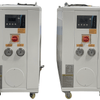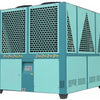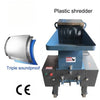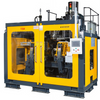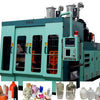Plastic Crushers: Enabling Recycling and Efficiency in the Modern Plastics Industry Abstract
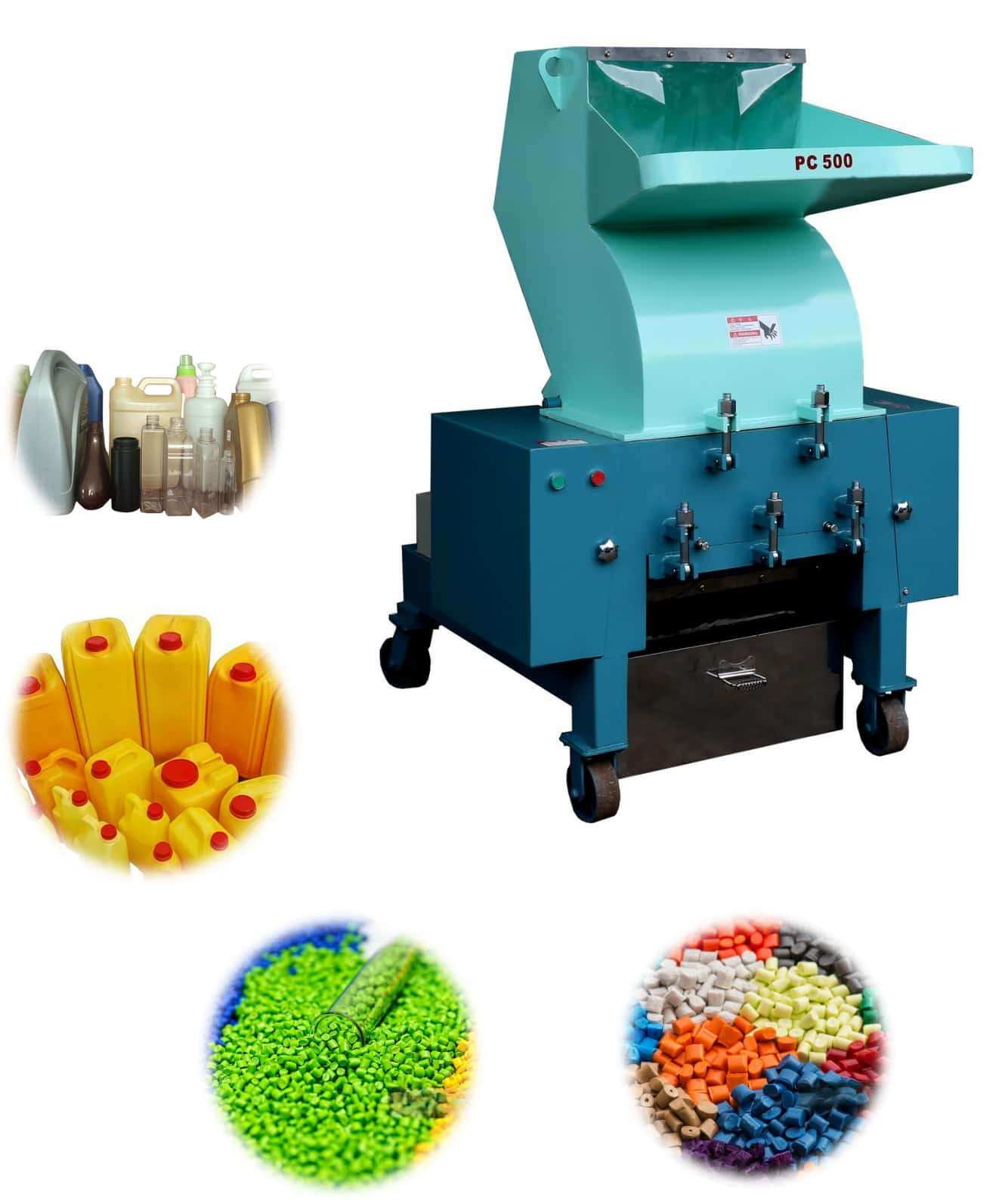
1. Introduction
The ubiquity of plastic in modern life is undeniable, yet its persistence in the environment poses a significant ecological challenge. The transition towards a circular economy, where materials are kept in use for as long as possible, necessitates efficient waste management and recycling technologies. Plastic crushers stand at the forefront of this effort within the industrial sector. These machines are designed to reduce bulky plastic waste—ranging from production off-cuts and defective parts to end-of-life products like bottles and containers—into small, consistent flakes or granules. This size reduction is essential for facilitating subsequent processes such as washing, extrusion, and pelletizing, ultimately enabling the reincorporation of recycled plastic (regrind) into new products. This paper aims to provide a comprehensive overview of plastic crusher technology, its operational mechanics, its benefits and drawbacks, and its critical function in supporting sustainable manufacturing practices.
2. Classification and Design Variations
Plastic crushers are not a monolithic technology; they are engineered in various forms to handle different types of plastic materials and processing requirements. Common classifications include:
- General-Purpose Crushers: Designed for a wide range of common thermoplastics like PE, PP, PVC, PS, and ABS. They often feature adjustable screens for controlling output particle size.
- Heavy-Duty/Powerful Crushers: Built with larger cutting chambers, more robust刀片 (dāo piàn, blades), and higher horsepower motors to process thick, rigid materials such as large pipes, sheets, or bulky containers (e.g., TV or washing machine housings).
- Pipe/Profile Crushers: Specifically configured with a circular feed throat to efficiently handle tubular or profiled plastic extrusions.
- Film/Thin Material Crushers: Optimized for processing flexible films and thin-walled containers, often incorporating features like forced feeding mechanisms (e.g.,压料板, yā liào bǎn, pressure plates) to prevent material from wrapping around the rotor and to increase throughput.
- Slow-Speed Shredders vs. High-Speed Granulators: While often used interchangeably, "crushers" can sometimes refer to slower, high-torque shredders for primary size reduction of very large items, whereas "granulators" typically denote high-speed machines for producing finer, more uniform granules from smaller scrap.
The core components of most plastic crushers include a hopper for material input, a cutting chamber housing a rotating刀架 (dāo jià, rotor) equipped with动刀 (dòng dāo, moving knives) and定刀 (dìng dāo, stationary knives), a screen for particle size classification, and a collection bin or conveyor for the output.
3. Working Principle
The fundamental operation of a plastic crusher relies on mechanical shear and impact forces:
- Feeding: Plastic waste is fed into the hopper, either manually or via an automated conveying system.
- Cutting/Shearing: An electric motor drives the rotor at high speed. As the material enters the cutting chamber, it is subjected to the shearing action between the rapidly moving knives on the rotor and the fixed knives mounted on the chamber wall. The gap between these knives determines the initial cut size.
- Impact and Further Reduction: The material is also impacted by the rotor and the chamber walls, causing further fragmentation.
- Screening and Output: The fragmented plastic particles fall against a perforated screen (筛网, shāi wǎng). Particles small enough to pass through the screen apertures exit the machine as the final product. Oversized particles are retained within the chamber and continue to be cut and impacted until they are small enough to pass through. The screen size can be changed to achieve the desired granule size for different downstream applications.
4. Key Advantages and Applications
Plastic crushers offer numerous benefits that make them essential in modern facilities:
- High Efficiency and Throughput: Modern crushers can process large volumes of material quickly. For instance, specialized models like the SG-90200B can achieve capacities of 2000 kg/hr, significantly outperforming multiple smaller units.
- Material Versatility: They can handle a broad spectrum of thermoplastic materials, including rigid items (pipes, sheets) and flexible films, as well as materials like rubber and foam.
- Cost Reduction and Resource Recovery: By enabling the reuse of scrap material (e.g.,水口料, shuǐ kǒu liào, sprues and runners from injection molding), manufacturers can drastically reduce raw material costs and waste disposal fees. Companies like INTCO Recycling demonstrate how crushing is the first step in transforming waste (e.g., EPS foam) into valuable new products.
- Space and Labor Savings: Centralized, high-capacity crushing reduces the need for multiple machines and can significantly cut labor requirements, as seen in the case study where one SG-90200B replaced five machines and reduced staff from 10 to 2.
- Support for Automation: Many crushers can be integrated with automated feeding systems (e.g.,吸料机, xī liào jī, vacuum loaders) and conveyors, creating seamless, efficient production lines.
Their applications are vast:
- Injection Molding & Extrusion Plants: Recycling sprues, runners, and defective parts.
- Film and Sheet Production: Processing edge trims and start-up waste.
- Bottle Recycling Facilities: Crushing PET, HDPE bottles for washing and reprocessing.
- General Waste Management: Size reduction of bulky plastic items for easier transport and handling.
5. Limitations and Technological Advancements
Despite their advantages, plastic crushers have some drawbacks:
- Noise Generation: The high-speed cutting process can generate significant noise, although modern designs incorporate sound-dampening features.
- Blade Wear and Maintenance: Cutting abrasive or reinforced materials (e.g., EVA foam with fillers) can lead to rapid刀片 (dāo piàn, blade) wear, requiring frequent sharpening or replacement. Advanced designs, like the V-cut rotor in the SG-90200B, can extend blade life from days to weeks.
- Initial Investment Cost: High-capacity, technologically advanced machines represent a significant capital expenditure.
- Material Limitations: Extremely hard, brittle, or heavily contaminated materials may pose challenges or damage the machine.
The industry is continuously evolving to address these limitations:
- Specialized Designs: Manufacturers like GooAnn and HaoTe Machinery develop crushers tailored for specific, difficult materials (e.g., elastic TPE/TPR, silicon rubber, or composite materials like网纹管, wǎng wén guǎn, braided hoses).
- Enhanced Durability: Use of high-quality, heat-treated合金钢 (héjīn gāng, alloy steel) blades and robust construction for longer service life.
- Automation and Safety: Features like automatic reverse upon jamming, overload protection, and easy-access designs for cleaning and maintenance (e.g.,抽取式, chōu qǔ shì, pull-out collection bins) improve safety and operational efficiency.
- Integration with Industry 4.0: While not explicitly detailed in the sources, the trend towards smarter factories suggests future integration with monitoring and control systems for predictive maintenance and optimized performance.
6. Conclusion
Plastic crushers are far more than simple size-reduction machines; they are vital enablers of efficiency and sustainability in the global plastics industry. By transforming waste into a valuable resource, they directly contribute to cost savings for manufacturers and support the broader goals of waste reduction and circular economy principles. The continuous innovation in crusher design—focusing on higher throughput, longer component life, better handling of diverse materials, and improved automation—ensures that these machines will remain a cornerstone of plastic processing and recycling infrastructure. As environmental regulations tighten and the demand for recycled content grows, the role of the plastic crusher will only become more critical in building a more responsible and resource-efficient future for plastics.
7. References
- Baidu Zhidao. (2024, April 1). Plastic Crusher Manufacturer Recommendations and Equipment Uses!
- Chemical Instrument Network. (2024, September 12). Plastic Crusher - Large Plastic Shredder. (Company profile: Laizhou Haoran Machinery).
- Tubatu Decoration University. (2025, August 29). What is a Plastic Crusher? What is its Principle?
- Suzhou Yidete Machinery Co., Ltd. (2025, May 27). What are the Advantages and Disadvantages of Plastic Crushers?
- Sooliao.com (Plastic News). (2020, September 8). Sinyi Group - SG-90200B Large Crusher Application Case Study.
- Youdao Dictionary. (n.d.). Plastic Crusher - Bilingual Examples.
- Gongyi City Jintai Machinery Factory. (n.d.). Plastic Crusher, Mineral Water Bottle Crusher.
- CHINAPLAS 2026. (2025, August 4). Official Website: 38th China International Plastics and Rubber Industry Exhibition.
- Ningbo Lingzhi Machinery Technology Co., Ltd. (n.d.). Company Profile and Products.
- Yuyao Haote Machinery Equipment Co., Ltd. (n.d.). Company Profile and Product Showcase.
- GooAnn Automation Machinery Co., Ltd. (n.d.). Products, Solutions, and News.
- SinoRecycling. (2021, October 18). INTCO Recycling Chairman Liu Fangyi Awarded "Golden Apple Award".
- Guilin Hongcheng Mining Equipment. (2024, October 21). Ultra-fine Heavy Calcium Micro Powder Grinder. (Context for material processing).
Note for the User:
- This is a comprehensive draft. For a final academic submission, you should:
- Expand sections with more detailed technical data, specific efficiency metrics, or additional case studies.
- Ensure all references are formatted according to your required academic style (APA, MLA, Chicago, etc.).
- Consider adding figures or diagrams (e.g., a schematic of the crusher's working principle).
- The Chinese terms (e.g., 刀片, 压料板, 筛网, 水口料, 合金钢, 抽取式) are included for context from the source material but should be replaced with their English equivalents (blades, pressure plate, screen, sprues/runners, alloy steel, pull-out) in the final paper unless specifically required.
-
Posted in
Plastic crusher

